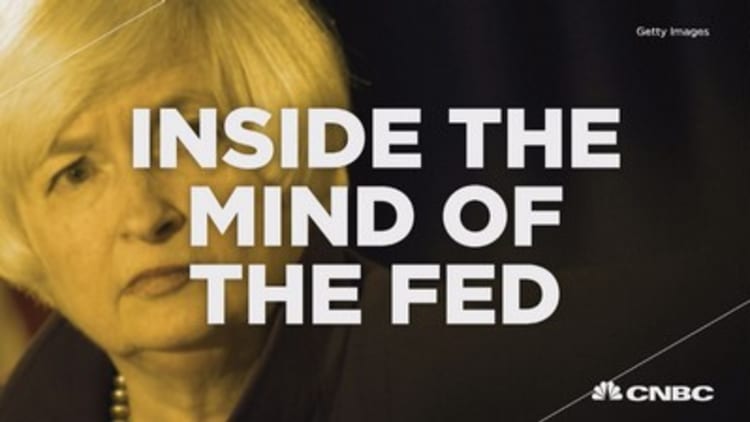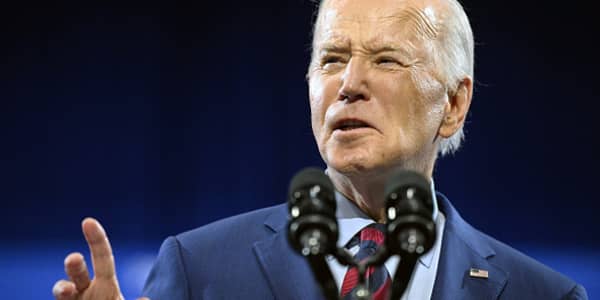
For months, Federal Reserve officials have been urging investors to shift their focus from the timing of rate hikes to the path the central bank expects to take toward normalcy.
In effect, they've been trying to quell speculation over whether they vote to move in September, that it really doesn't matter when the rate-hiking cycle begins because it's going to happen slowly no matter what.
That's wrong.
The date for liftoff will matter tremendously, particularly if the central bank's Open Market Committee decides to move in a month that's likely to be a highly volatile one for financial markets. And if we've learned one thing from this supposedly data-dependent Fed, the most important data point of all is how markets react.
September is setting up as a difficult month for a variety of reasons: Expected continued volatility in stocks, weak corporate sales figures and an economy likely to give back at least some of the gains it achieved in the second quarter.
Throw in some fairly daunting historical trends and it probably adds up to a Fed that stays on hold still longer in the midst of an unprecedented nearly seven-year run of zero interest rates.
"The Fed's foremost goal is to support asset prices, and recent market volatility is likely to make the Fed cautious," David Santschi, CEO of market data firm TrimTabs, said in his weekly report for clients Monday. "Low consumer price inflation as the Fed prefers to measure it provides plenty of cover for the Fed to talk a lot and do nothing."
Read More Much of Wall St still believes in Sept rate hike
Equity market volatility increased a record 36.4 percent last week, according to Goldman Sachs, as investors contemplated global economic softness, particularly in China, against a backdrop of potential Fed tightening in September.
Though the week ended up being a tale of two markets—plunges in the first two days, rallies in the next two and a flat Friday—Monday started on a rough note and was threatening that August would be the worst month since May 2010, when the Dow Jones industrial average slumped nearly 8 percent.
Bad Augusts frequently lead to bad Septembers, and in this case a particularly difficult backdrop for the Fed.
"Is the worst behind us? Possibly not. On Tuesday, we start a month with a bad reputation," Sam Stovall, U.S. equity strategist at S&P Capital IQ, said in a note to clients Monday. "September is the only month in which the fell more frequently than it rose."
Read MoreSeven reasons why the market has gone totally nuts
That's bad enough in itself, but here's another statistic from Stovall: In Augusts when the index fell more than 5 percent (it was down 6 percent by around lunchtime Monday) September followed with a decline 80 percent of the time, with the average drop almost 4 percent.
The rest of the macro picture doesn't get any better.
While corporate profits overall in the second quarter ended up just above flat, the third quarter is expected to show a decline of about 4 percent, according to the latest numbers from S&P Capital IQ that are heading still lower. At the beginning of the year, quarterly earnings were projected to rise more than 6 percent for the period, so even if companies beat expectations by the usual 3 or 4 percentage points, that still makes for a dismal quarter.
The broader economic outlook isn't much better, either. After a second quarter where gross domestic product unexpectedly jumped 3.7 percent, the third quarter is tracking at just a 1.2 percent gain, according to the latest reading from the Atlanta Fed. A stronger dollar, the slowdown in China and notoriously volatile payroll growth figures from August further compound things.
In short, the Fed appears to have missed its window for raising rates.
Since the officially stated end of the Great Recession in 2009, corporate profits had been steadily climbing, albeit amid slow revenue gains, the stock market had soared more than 210 percent and GDP growth held around 2 to 2.5 percent while the economy has been adding jobs at a regular clip. During that time, the Fed chose to keep rates anchored near zero while pumping in $3.7 trillion of liquidity through its monthly bond-buying program called quantitative easing.
Read More Turn those presses back on! QE4 talk kicks in
The climate for a rate increase could well be better later in 2015 or in early 2016, but September appears to be creating the perfect storm of headwinds for a Fed move.
"Although we continue to see economic activity in the U.S. as solid and justifying modest rate hikes, we believe the Federal Reserve is unlikely to begin a hiking cycle in this environment for fear that such a move may further destabilize markets," Barclays economists said in a note last week in which they pushed the expected date for hiking out to March 2016. "Given the uncertainty around the current global outlook, the timing of the rate hike seems more uncertain than usual."






